Rose Rosette Disease Roll Call
hartwood
10 years ago
Featured Answer
Sort by:Oldest
Comments (124)
enchantedrosez5bma
8 years agorosiewells7b
8 years agoRelated Discussions
Rose Rosette Disease question?
Comments (12)Hi. Jim Amrine and his students are the ones who worked with the mites. Jim thinks that to get the (now we know it's a) virus into the vascular system of the rose, the move is through the cheliceral stylets of the mites. There are also two appendages that sort of look like "hands" in that they have a stalk and a bunch of things that emerge from the bottom of the stalk. Those things can just whir when the mite decides for them to. I don't think anyone knows why. Just translating our thoughts to something that small whose mind is probably a series of if-then statements, and not much more. Can we outwit something that has no wits? Jim is the one who came up with the very logical idea that if the stylets get into undifferentiated meristemic tissue, and put the virus there, then the virus can get into the vascular system. Getting the virus into a pre-existing phloem cell is almost impossible otherwise, because there is no part of the mite that is long enough in microns to reach into the plant into the phloem. In my ebook, take a look at the line drawing of the mite. Now to put that into a size that you know. That mite is the size of a bedroom slipper that would fit on one aphid foot. From what I've read frass transmission of viruses is known for beetles and one of the professors who studied RRD in Arkansas also did the beetle frass work. Check Dr. Rose Gergerich for references. The only cut apart body view of an eriophyid mite that I recall is in a book called Eriophyideae. Just cutting a microtome section through a mite so that it's along the middle of its back AND vertical must have been a challenge. IIRC, the animal has a relatively short digestive tract. It has no respiratory system-that's done through the 'skin'. To opuntiamc's original questions: I know several people who have been devoted insecticide and miticide sprayers. They have continued to have RRD infections. They have made major efforts to remove infected 'wild' roses in the fields around them. Remember we call spider mites and eriophyid mites ....we call them both mites. But there are so many physical differences ...size, predators vs. objects of predation, number and location and articulation of legs, response to us and movement, etc. Even within eriophyids, there are some major differences. The mites that include the RRV vector potential live very differnt lives from the mites that make the galls on oak leaves...even on poison ivy leaves. poison ivy leaf galls What has recently interested me is that the leaves with galls are not widespread on a plant but only on a few and I wonder what we can learn/infer/guess is happening. The one part of the country that hasn't had RRD as much as it 'should' have is the area in the Delta where there was a major spraying program against boll wevils. That eradication program has stopped, so time will tell If it has a positive effect. The -cides have one big negative: their targets develop tolerance and the -cides stop working. Air flow modification does work if you have the room; removing one sick cane earliest...can work some of the time and some of the time beats none of the time, and maybe some of the very small predaceous thrips and mites will continue their hunger for the eriophyids. Ann...See MoreRose Rosette Disease
Comments (86)The whole issue is potentially really quite terrible. Weeks brought "research material" into their production fields and propagated it beside roses they made for sale to the public. Some of that material was infected with RRD. That was four, perhaps longer, years ago. It can take several years for RRD to manifest itself. In the several years since the initial infection, bud wood, cuttings and bare root plants have been distributed to virtually every commercial rose source in the US as well as abroad. That means, worst case scenario, there are RRD time bombs at every production source of roses in this and perhaps many other countries. By now, who knows how many Weeks roses (and other varieties they propagated) may have been exposed? Perhaps none. Perhaps... Yes, if no one buys, the industry and its members suffer and perhaps fail. How much of a gambler are YOU? If I had a yard full of roses I could easily replace and if RRD existed outside my fences, I may feel differently. I don't and it doesn't....See MoreIs this Rose Rosette Disease?
Comments (23)You know I maybe overthinking things here but there are some very odd things in the last two photos. They both are yellowed like you would expect from herbicide. Yet in the last photo look at the sepals on that flower very unexpected. Plus there is very thick new growth coming on the side of the bud and from every other spot on that shoot, excessive. In the photo above, there are flowers but no stamin‘s or pistil. New leaves are not skinny and stunted. They are thin and excessively long with new growth coming from everywhere. The top flower is very rrd like. Is anyone very confident that this is not rrd?...See MoreA new tool for identifying rose rosette disease
Comments (4)A Google search reveals several articles in "nursery type" publications which I assume were written with the non specialist in mind. https://www.google.com/search?newwindow=1&sxsrf=ACYBGNR1xCXFLmGDNyzRhhGNQPd-gW0N7w%3A1575866273158&source=hp&ei=oc_tXcLxBoW8tQXw84lA&q=raman+%22rose+rosette%22&oq=raman+%22rose+rosette%22&gs_l=psy-ab.3..33i299.2264.11689..29845...1.0..0.372.2908.0j18j1j1....2..0....1..gws-wiz.......0i131j0j0i10j0i22i10i30j0i22i30j33i160.xb5ol6IJ6r0&ved=0ahUKEwiCxrCr36fmAhUFXq0KHfB5AggQ4dUDCAg&uact=5...See Morebraverichard (6a, North MO)
8 years agoloisthegardener_nc7b
8 years agolainey2 VA
8 years agobraverichard (6a, North MO)
8 years agognabonnand
8 years agolast modified: 8 years agobraverichard (6a, North MO)
8 years agoPatty W. zone 5a Illinois
8 years agolainey2 VA
8 years agohenry_kuska
8 years agognabonnand
8 years agobraverichard (6a, North MO)
8 years agomsjam2
8 years agobraverichard (6a, North MO)
8 years agomsjam2
8 years agoenchantedrosez5bma
8 years agobraverichard (6a, North MO)
8 years agoenchantedrosez5bma
8 years agomsjam2
8 years agolast modified: 8 years agoenchantedrosez5bma
8 years agomsjam2
8 years agoenchantedrosez5bma
8 years agorev_roses
8 years agodublinbay z6 (KS)
8 years agobraverichard (6a, North MO)
8 years agolast modified: 8 years agohenry_kuska
8 years agorev_roses
8 years agoryanthomasward
8 years agomomscottagegarden
7 years agoAnne Zone 7a Northern CA
7 years agocamieux
5 years agoSheila z8a Rogue Valley OR
5 years agoflowersaremusic z5 Eastern WA
5 years agosummersrhythm_z6a
5 years agolast modified: 5 years agoportlandmysteryrose
5 years agoSheila z8a Rogue Valley OR
5 years agolast modified: 5 years agoportlandmysteryrose
5 years agoHouse Ideas
5 years agosummersrhythm_z6a
5 years agoHouse Ideas
5 years agolast modified: 5 years agoHouse Ideas
5 years agocamieux
5 years agoSheila z8a Rogue Valley OR
5 years agosummersrhythm_z6a
5 years agostillanntn6b
5 years agoportlandmysteryrose
5 years agolast modified: 5 years agoamymahar
2 years agoportlandmysteryrose
2 years agolast modified: 2 years ago
Related Stories

GARDENING GUIDESWhat Are Your Spring Gardening Plans?
Tearing out the lawn? Planting edibles? Starting from scratch? Tell us what you plan to change in your garden this year
Full Story
HOLIDAYSHouzz Call: Share Your Personal Holiday Traditions
What winter rituals mean the most to you and yours? Post your stories and pictures
Full Story
FUN HOUZZHouzz Call: Tell Us About Your Dream House
Let your home fantasy loose — the sky's the limit, and we want to hear all about it
Full Story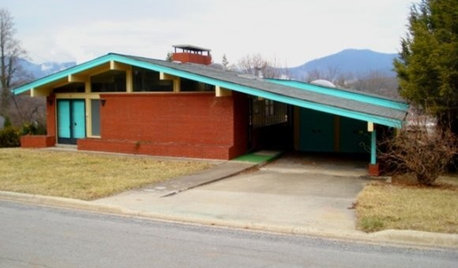
LIFEHouzz Call: Show Us the House You Grew Up In
Share a photo and story about your childhood home. Does it influence your design tastes today?
Full Story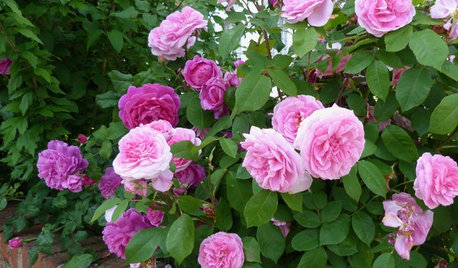
GARDENING GUIDESWhat Kind of Roses Should You Grow?
Want to add the beauty of roses to your garden? Find out which ones, from old-fashioned to modern, are right for you
Full Story
GARDENING GUIDESRoses: Crowning Touch of Gardens
Whether you're the Miss or Mister America of gardening or take a hands-off approach, roses can be a winning addition to your landscape
Full Story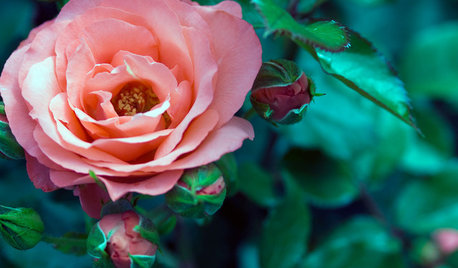
GARDENING GUIDESLearn the Secret to Bigger and Better Roses
Grow beautiful roses using both ordinary and unusual soil amendments
Full Story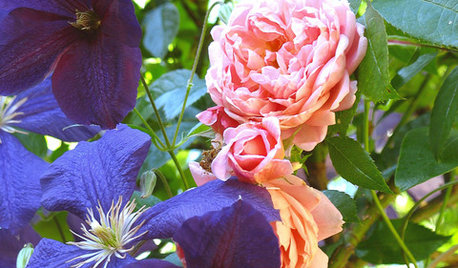
PLANTING IDEASGreat Garden Combo: Rose + Clematis for Small-Space Impact
We all need somebody to lean on. And when a rose supports a climbing vine, the results can totally transform a small garden
Full Story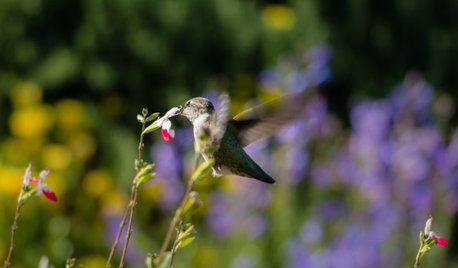
GARDENING GUIDESAttract Hummingbirds and Bees With These Beautiful Summer Flowers
Roll out a welcome mat for pollinators to keep your landscape in balance and thriving
Full Story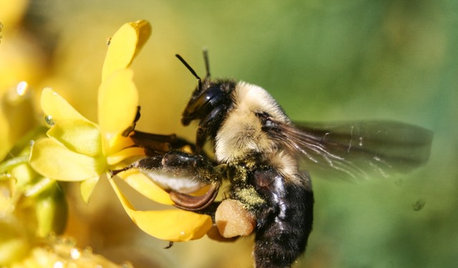
GARDENING FOR BUTTERFLIESGardening for the Bees, and Why It’s a Good Thing
When you discover how hard bees work for our food supply, you may never garden without them in mind again
Full StorySponsored



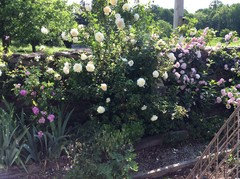
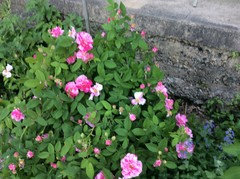





erasmus_gw